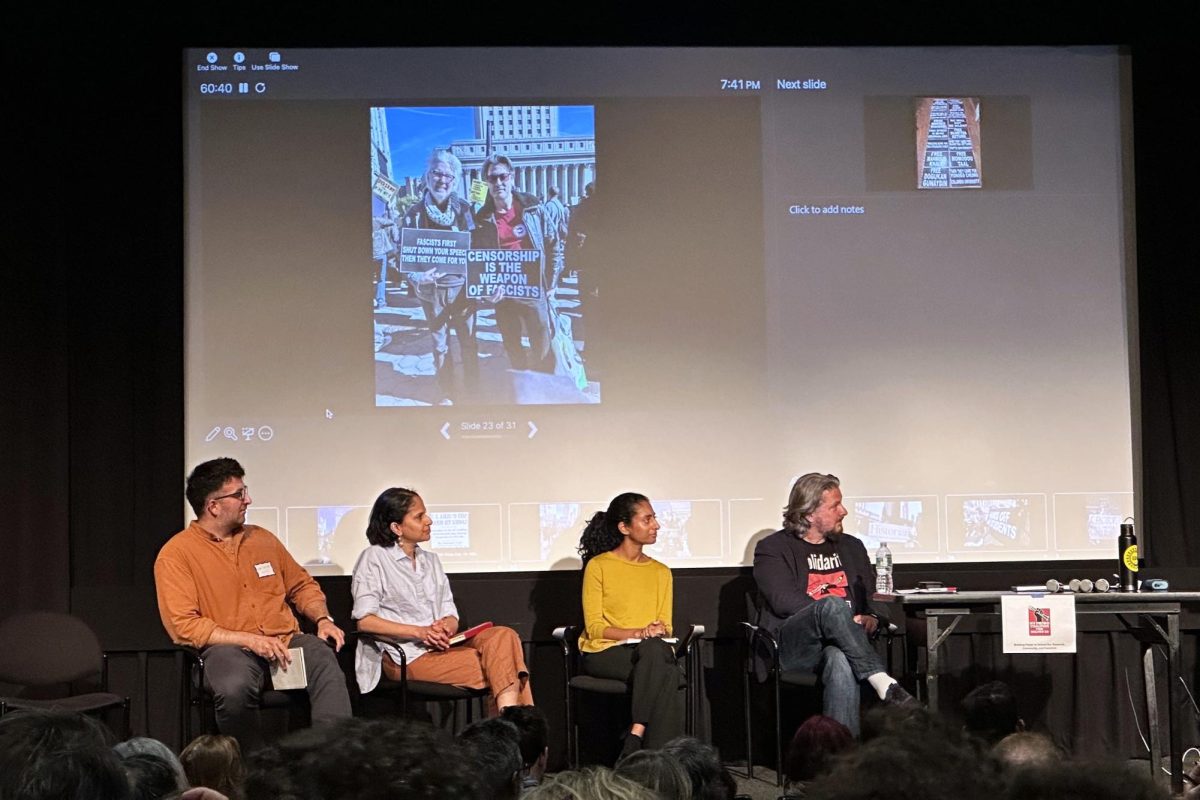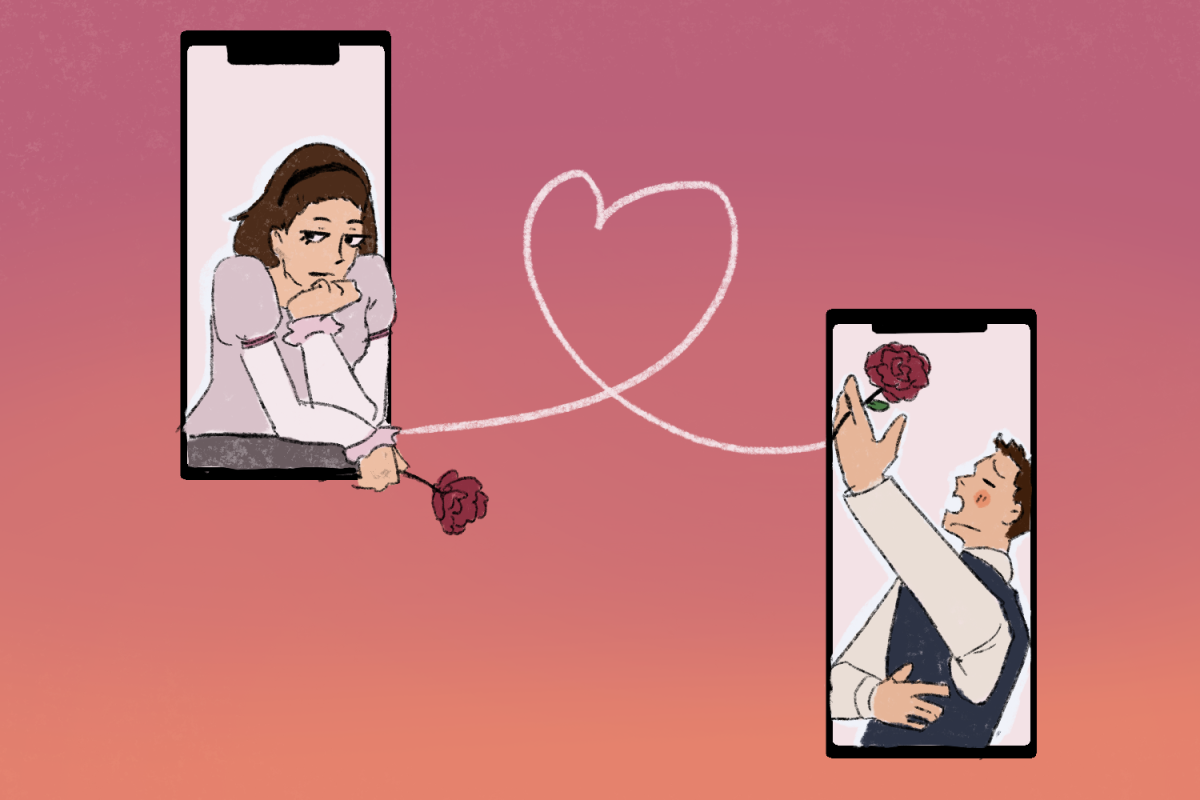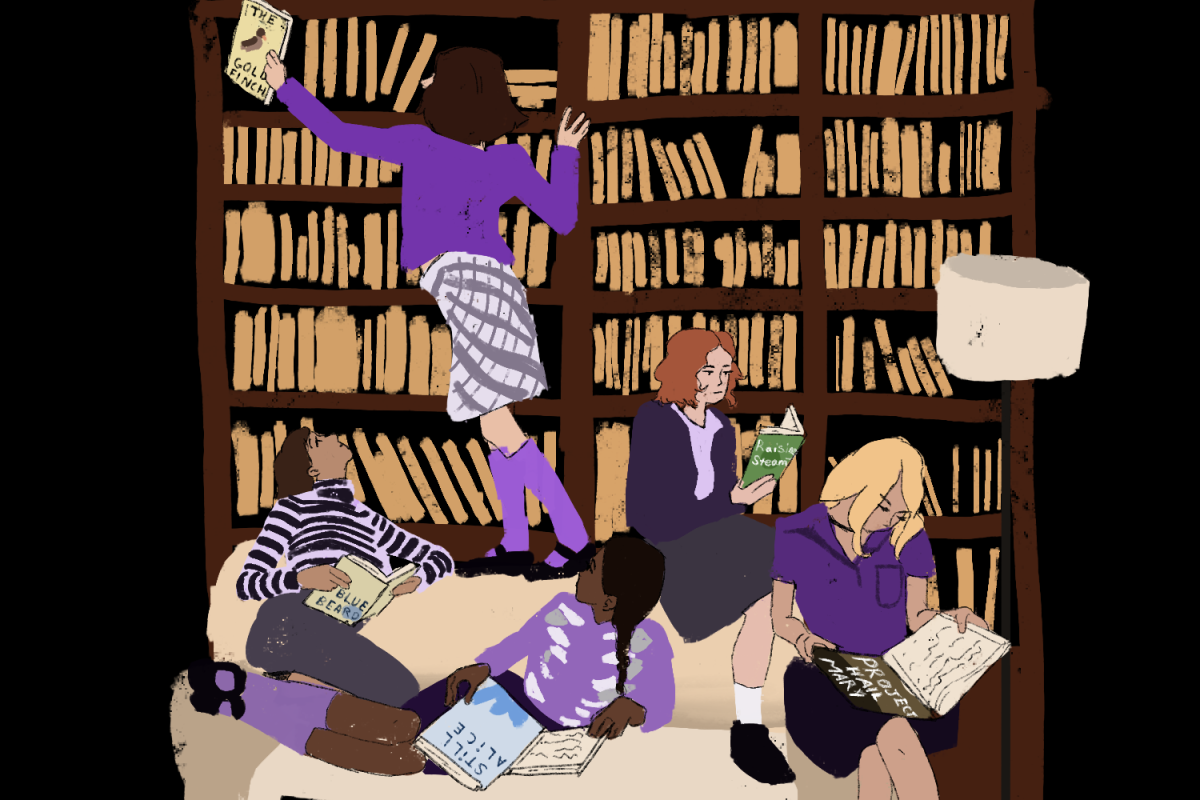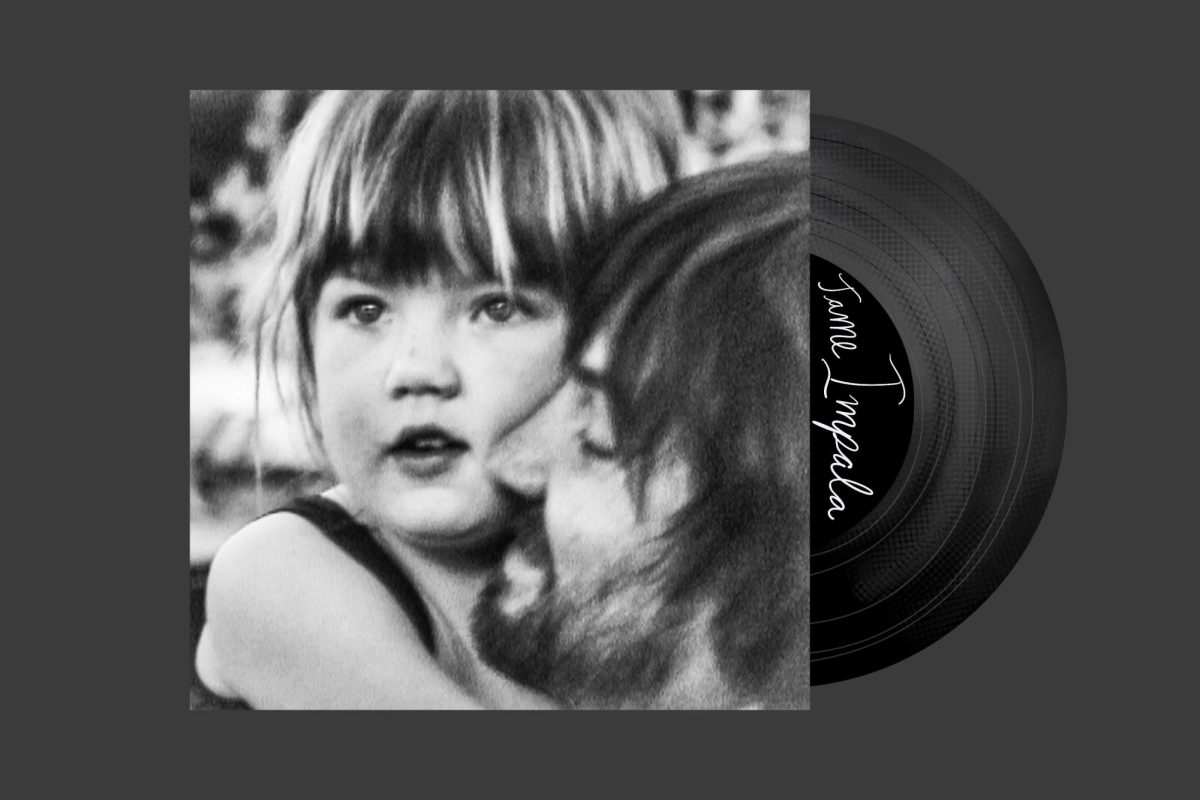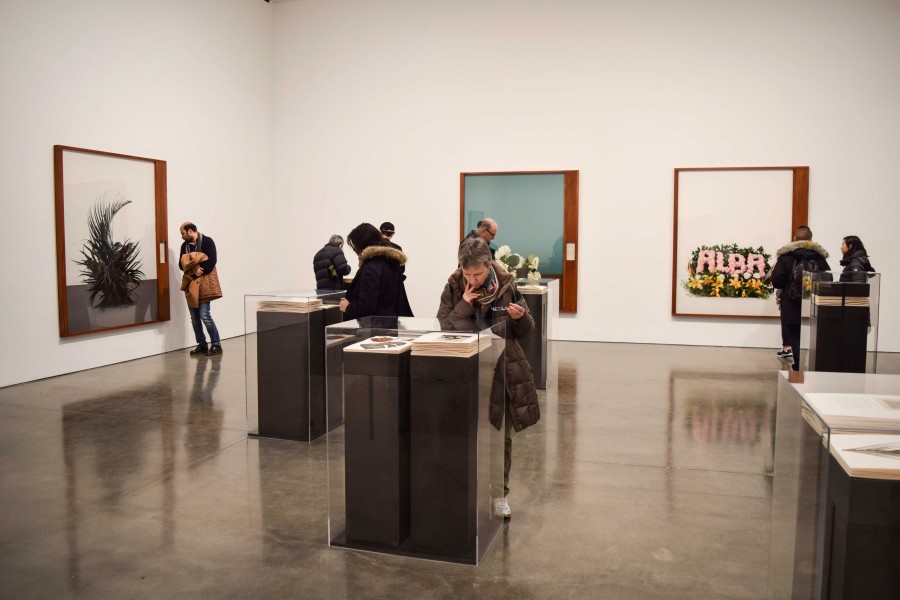Flowers of Diplomacy Wilt at Gagosian
“Paperwork and the Will of Capital,” is a current photographic exhibition about the symbolic nature of flowers at the Gagosian Gallery.
February 22, 2016
Flowers may well be the most common symbol in all art. They feature prominently in religious traditions, in poetry and in national identities. Flowers are allegories with definitions created by the viewer. In ancient Chinese poetry, flowers stood for purity. For the English romantic poets, they stood for passion. In modernist poetry, flowers symbolize beauty amidst decay. In “Paperwork and the Will of Capital,” Taryn Simon imagines flowers in yet another way: as a symbol of diplomacy.
The exhibit, comprising two rooms at the Gagosian Gallery at 555 W. 24th St., recreates the floral arrangements present at important diplomatic agreements, the details of which are outlined in plaques. Some of these agreements will sound familiar, such as the formation of the European Union and the USSR’s acknowledgement of the Polish Solidarity Union. Others are more obscure, such as the deal establishing relations between the Catholic Church and Israel.
The uniting factor among most of these agreements is their influence shaping the modern political landscape.There is scarcely a plaque in the exhibit that does not call to mind an international controversy. From an education standpoint, the exhibit is a valuable reminder of how contemporary political situations are not inevitable, but rather the result of a long series of choices.
The flowers featured are very diverse. They are all cut and organized beautifully. Some species are very ordinary, while others are exotic crossbreeds. The more elaborate arrangements may feature flowers from three or four different countries, mimicking the harmony many of the agreements hope to foster.
The flowers are photographed prettily, but there is not much range in photographic style. Each bundle is placed in the lower middle of the composition, against a background that provides a very stark color contrast. The photographs are strongly filtered, so much so that they have the appearance of pop art. This is a nice effect, but its power wears off after several dozen photos.
The entertaining prettiness of the flowers is as much a flaw as it is a strength. The flowers are colorful and fun on their own, but they seem only tangentially related to the agreements reached in their presence. Perhaps this is the point, and the contrast between flower and contract is wholly ironic. If this is in fact the point, it is far too one-dimensional to warrant a whole gallery.
Generally, the exhibit is stuck between wanting to be politically insightful and pictorially attractive. These goals clash often in art and are not easily reconciled and usually only one is an artist’s strength. This is true here. For an insightful examination of international relations, look elsewhere — but for some good, artsy shots of flowers, this will do.
“Paperwork and the Will of Capitol” is on display at the Gagosian Gallery at 555 W. 24th St. through March 26.
A version of this article appeared in the Feb. 22 print edition. Email Tony Schwab at [email protected].

